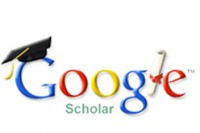Collaborative Writing in an EFL Context
DOI:
https://doi.org/10.18196/ftl.118Abstract
Working collaboratively has been widely promoted in education. In the area of English language teaching and learning, working collaboratively can frequently be seen in speaking activities, in which students were assigned to practice speaking with their peers. Unfortunately, working collaboratively in writing is not as popular as in speaking. This study aims to explore the collabora- tive writing in an EFL context. As a part of a bigger study, the data were collected through out a semester and integrated with weekly meetings, which aimed to reach several objectives through a variety of activities, including group painting, individual writing, and collaborative writing. A total of 64 freshmen that were divided into two groups participated in the study. In the collaborative writing activity, students were instructed to do group painting and write a story written in groups based on their paintings. Each member of the group took turns to write the story, which cohesiveness and coherence should be given attention. Students were given freedom to choose their own topics for painting and writing to encourage them express their ideas. The data were gathered through class observation and students’ reflection that was submitted at the end of the semester as a part of class assessment. The observation revealed that students faced some challenges when performing the tasks. Time management, student interdependence, and types of writing were among the issues emerging in collaborative writing activities. From students’ reflection, it was found that while most students stated they enjoyed the activities, one student expressed that the collaboration did not work as well as she had expected.
References
Bitchner, J., Young, S., & Cameron, D. (2005). The effect of different types of corrective feedback on ESL student writing. Journal of Second Language Writing , 14, 191-205.
Elola, I., & Oskoz, A. (2010). Collaborative writing: Forstering foreign language and writing conventions development. Language Learning and Technology , 14 (3), 51-71.
Hodges , G. C. (2002). Learning through collaborative writing . Literacy , 36 (1), 4-10.
Khatib, M., & Meihami, H. (2015). Languaging and writing skills: The effect of collaborative writing on EFL students' writing performance. Advances in Language and Literary Studies , 6 (1), 203-211.
Lantolf , J., & Thorne, S. L. (2007). Sociocultural theory and second language learning. In B. van Patten, & J. Williams , Theories in second language acquisition (pp. 201-224).
Mahwah, NJ: Lawrence Erlbaum.
Lo, J., & Hyland, F. (2007). Enhancing students' engagement and motivation in writing: The case of primary students in Hong Kong . Journal of Second Language Writing , 16, 219-237.
Mulligan, C., & Garofalo, R. (2011). A collaborative writing approach: Methodology and student assessment. The Language Teacher , 35 (3), 5-10.
Nation , I. (2009). How large a vocabulary is needed for reading and listening? Canadian Modern Language Review , 63 (1), 59-92.
Rollinson, P. (2004). Experiences and perceptions in an ESL academic writing peer response group. Estudios Ingleses de la Universidad Complutense , 12, 79-108.
Speck, B. W. (2002). Facilitatin students' collaborative writing. SF: Jossey-Bass.
Storch , N. (2005). Collaborative writing: Product, process, and students' reflections. Journal of Second Language Writing, 14 (153-173).
Storch, N. (2011). Collaborative writing in L2 contexts: Processes, outcomes, and future directions. Annual Review of Applied Linguistics , 31, 275-288.
Vygotsky, L. S. (1978). Mind in society: The development of higher psychological processes. Cambridge , MA: Harvard University Press.
Downloads
Published
How to Cite
Issue
Section
License
Copyright
Authors retain copyright and grant the journal right of first publication with the work simultaneously licensed under a Creative Commons Attribution-ShareAlike 4.0 International License that allows others to share the work with an acknowledgment of initial publication in this journal.
Authors are permitted and encouraged to post their work online (e.g., in institutional repositories, social media account, or on their website) after the article getting published in the journal, as it can lead to productive exchanges and earlier and greater citation of published work (See The Effect of Open Access).License
You are free to:
- Share — copy and redistribute the material in any medium or format
- Adapt — remix, transform, and build upon the material for any purpose, even commercially.
Attribution — You must give appropriate credit, provide a link to the license, and indicate if changes were made. You may do so in any reasonable manner, but not in any way that suggests the licensor endorses you or your use.
ShareAlike — If you remix, transform, or build upon the material, you must distribute your contributions under the same license as the original.
- No additional restrictions — You may not apply legal terms or technological measures that legally restrict others from doing anything the license permits.


.png)





